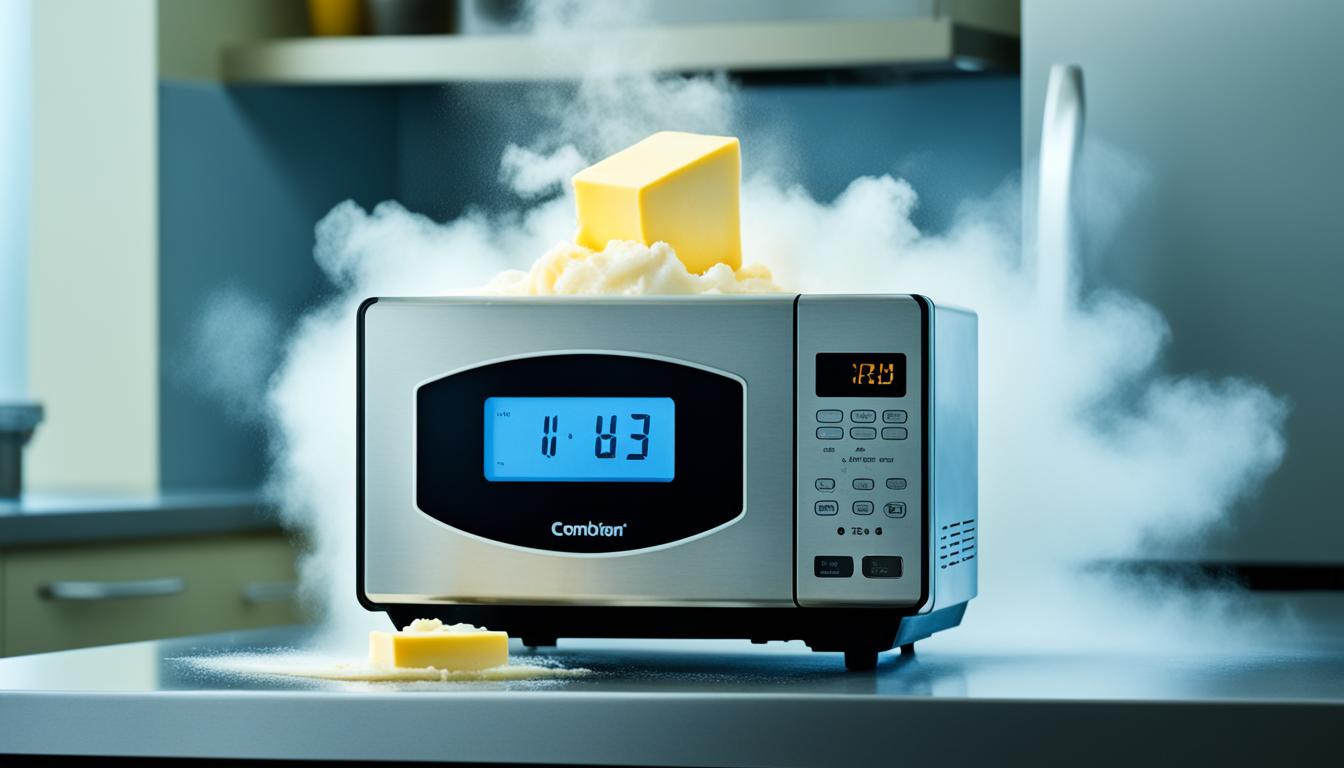Have you ever been in the middle of baking a batch of cookies, only to realize that your butter is still cold and hard as a rock? It’s frustrating, isn’t it? But fear not, because we have the solution for you. We’ll share the best way to soften butter quickly so you can get that spreadable consistency you need for your recipes.
So, what’s the secret to softening butter in a flash? Is it possible to soften cold butter fast? Well, it turns out that there are a few simple methods that can transform your rock-hard butter into a creamy and easy-to-mix ingredient in no time.
But why is it so important to soften butter for baking? Can’t we just use it straight from the refrigerator? The truth is, using softened butter creates a better texture in your baked goods. It allows the butter to mix evenly with other ingredients, resulting in light and fluffy cakes, cookies, and pastries.
Now, get ready to discover the best way to soften butter when you’re pressed for time or forget to plan ahead. We’ll walk you through the step-by-step process and provide alternative methods that work like a charm. So, are you ready to take your baking game to the next level? Let’s get started!
Soften Butter for Baking
Softened butter is often called for in baking recipes. This is because it easily emulsifies with other ingredients, creating a smooth batter that bakes evenly.
To soften butter for baking purposes, it’s best to leave it out on the counter for about 1-2 hours prior to starting your recipe. The temperature of a room in most households is around 65°F (18°C), which is ideal for achieving the right softness.
If your butter becomes too warm and starts to melt, it can lead to dense cakes and cookies that spread too much. It’s important to find the right balance — ensuring the butter is cool to the touch but pliable enough to cream with sugar.
One helpful tip is to cut the butter into smaller chunks before leaving it out to soften. This increases the surface area, allowing the butter to warm more quickly and evenly.
If you find yourself short on time, there are a few alternatives to consider. One option is to use a grater to grate cold butter into small, manageable pieces. These smaller pieces will soften more rapidly at room temperature.
Another alternative is to soften butter using the microwave. However, this method can be tricky as it’s easy to accidentally melt the butter instead of just softening it. For best results, it’s recommended to use the natural room temperature method whenever possible.
In conclusion, softening butter for baking is an essential step in achieving the perfect texture and consistency in your baked goods. With the right approach, you can ensure your butter is soft enough to blend easily with other ingredients, resulting in delicious, tender treats.
Soften Butter in the Microwave
When you’re in a hurry and need to soften butter quickly, the microwave can be a handy tool. Here’s a simple method to soften butter in the microwave:
- Slice the butter into small pieces and place them in a heatproof bowl or on a plate.
- Pour 2 cups of water into a microwave-safe cup and heat it for 2 minutes until extremely hot.
- Remove the water from the microwave and quickly place the butter alongside it.
- Close the microwave door to trap the hot air and let the radiant heat soften the butter in about 10 minutes.
It’s important to spread out the butter pieces in a larger bowl or plate to ensure even and quick softening.
Alternative Methods to Soften Butter
If you find yourself without access to a microwave or simply prefer alternative methods, there are other ways to soften butter quickly and effectively. One such method is to soften butter in the oven. Preheat your oven to its lowest setting, typically around 170°F (77°C). Place the butter on a heatproof plate or in a heatproof dish, and carefully place it in the oven for a few minutes. Keep a close eye on the butter to ensure it becomes soft but not completely melted. This method is ideal when you need to soften a larger quantity of butter.
Another alternative method is to try grating cold butter using a cheese grater. This technique allows you to achieve small, manageable pieces of butter that will soften quickly at room temperature. Simply take your cold butter and grate it using a cheese grater. The smaller pieces exposed to the air will soften much faster. This method is particularly useful when you’re in a rush and don’t have time to wait for the butter to reach room temperature naturally.
When it comes to softening butter, the microwave may be the go-to method for most people. However, there are times when a microwave is not available or suitable. In such cases, using the oven or grating the cold butter are two great alternatives that can yield the desired softness without melting it entirely. Experiment with these methods to find the one that works best for you and enjoy the convenience of easily spreadable butter for all your baking needs.
